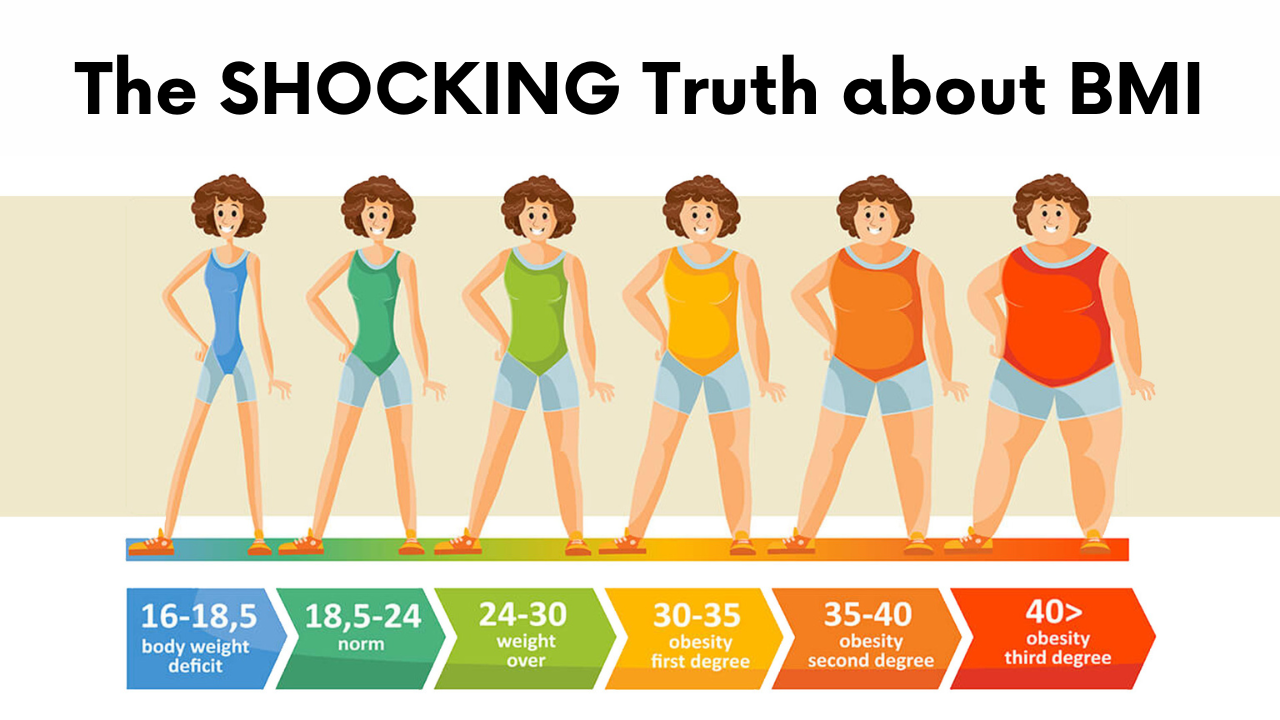The Shocking Truth About BMI
Jul 29, 2021
Discover the truth about BMI's reliability, its historical origins, and modern alternatives for measuring health. Learn why this 19th-century metric may not be the best indicator of wellness.
What is BMI?
Everyone has heard of BMI before, short for Body Mass Index. It is a tool that is used all around the world to classify people into "healthy,” under, or overweight based solely on height and weight. However, several factors such as age, sex, and body type are not taken into account when assessing someone’s health using the BMI tool. So where does this term come from and why was it invented?
The History of BMI
BMI is derived from a simple math formula. It was devised in the 1830s by Lambert Adolphe Jacques Quetelet, a Belgian astronomer, mathematician, statistician and sociologist. Notable is that Quetelet was nowhere near a medical doctor. During his work, Quetelet developed a passion for probability calculus that he applied to study human physical characteristics.
Quetelet is best known for his sociological work aimed at identifying the characteristics of l’homme moyen, meaning "the average man" in French. This "average man" was Quetelet’s representation of a social ideal – an ideal Quetelet believed was the mathematical mean of a population.
The Origins of the BMI Formula
His desire to quantify this social ideal prompted Quetelet to study human growth in the context of populations. These studies led him to conclude that other than the spurts of growth after birth and during puberty, "the weight increases as the square of the height.” The resulting formula is BMI = weight (kg) / height(m)^2. The equation was known as the Quetelet Index until it was named Body Mass Index in 1972 by Ancel Keys, an American physiologist who studied the impact of diet on health (for anyone going through extreme hunger after anorexia, yes, this is the Ancel Keys who led the Minnesota Starvation Experiment!).
Problems with BMI
Historical Context and Bias
A very important aspect in the invention of the Body Mass Index is the time frame in which it took place. Quetelet’s studies were published during the early 19th century, a time when there were no computers, electronic devices, or calculators that could accurately assess or examine the human body like we can do with the technology of today. He developed a system based on a simple math formula, while we now know that no number can ever capture the complexity of our bodies and associated health issues!
The 1800s were also a boom time for racist science. Quetelet’s studies were based solely on the size and measurements of French and Scottish men, meaning:
- People of color were excluded
- No women or members of the LGBTQIA+ were included
- Immigrants were not represented
- Poor people were not considered
- Disabled people were not included
To emphasize the obvious: BMI was devised exclusively by and for white Western European men.
Modern Scientific Limitations
Even though BMI was invented over 200 years ago, it’s STILL being used as a means to determine overall health. I don’t know about you, but I find it quite absurd that in an era where artificial intelligence (AI) can diagnose complex diseases and analyze genetic sequences, we're still relying on a simple mathematical formula from the 1830s to assess human health. Here are just some of the factors that BMI doesn’t account for:
- Muscle-to-fat ratio
- Bone density
- Overall body composition
- Age-related changes
- Sex-specific differences
- Recovery needs (eating disorders, injuries)
In the case of anorexia recovery, individuals often need to overshoot their weight. This means they will likely register as "overweight" or "obese" on the BMI scale. While the prospect of having your BMI skyrocket after being underweight may seem like the world is ending, this additional weight and body fat is absolutely essential for repairing the extensive damage caused by malnutrition – from rebuilding organ tissue, to restoring bone density, to balancing hormones, and beyond.
Beyond BMI: A Holistic Approach to Health
An abundance of science has been busting common myths about size, health, and weight loss for years, so why are we so obsessed about our place on a BMI chart? Like any historic tool, BMI is a product of its social context. With all the technological advances made in just the last few decades, is it not questionable that medical professionals use something as simple as a math formula to determine whether someone is "healthy" or not?
Patients with a history of eating disorders are being told they are “recovered,” merely because they have reached a "healthy" BMI. But what about the mental aspect? What about the absence of menstruation in people who get periods, or the mental hunger indicating that the body still feels deprived?
Back in the 1800s, BMI was created solely because there was no better alternative. Now there are so many different measurement tools, you can get a pretty good image of someone’s wellbeing when put together. A simple blood test can reveal crucial information about your body's functioning, from nutrient levels to organ health. More often than not, however (assuming you have no chronic illness), the best "markers" of health are as simple as observing the way you are treating your body and listening to its signals. What are your eating and drinking habits like? How often do you get outside and move your body in a way that gives you energy and brings you joy? Are you getting enough sleep? Although it almost seems "too simple" to ask yourself these questions, it often is "that simple"! here's no need to overcomplicate what the innate wisdom of your body has already perfected over millions of years of evolution. It’s no coincidence obesity and eating disorders were practically nonexistent before we even knew about calories or diets – we seemed to do better when we knew less!
Why BMI Fails in Today's Diet Culture
In our current day and age – with all the fad diets, health claims, and chemically-ridden “healthier” alternatives, it can be hard to stay true to yourself and your body. However, crunching numbers into calorie counters, “how much to eat in a day” calculators, or pinpointing your place on a BMI chart will never even get you close to living in alignment with your true being. We have overcomplicated how to respond to something as simple as the human desire for food. From a biological standpoint, overthinking your body’s signals only creates confusion, which can often result in health concerns that could have easily been avoided.
As hard as it is to silence the noise of the health industry – as hard as it is to stop comparing yourself to photos of influencers on social media (of which the majority are fake anyways) – one of the most important, most reliable markers of health is the way you feel in every sense of the word.
Ready to break free from the BMI myth and find true food freedom? In my book How to Beat Extreme Hunger, I guide you through the journey of trusting your body again without fears of losing control. Grab your copy today and discover how to honor your body's wisdom beyond the numbers.
Sources:






